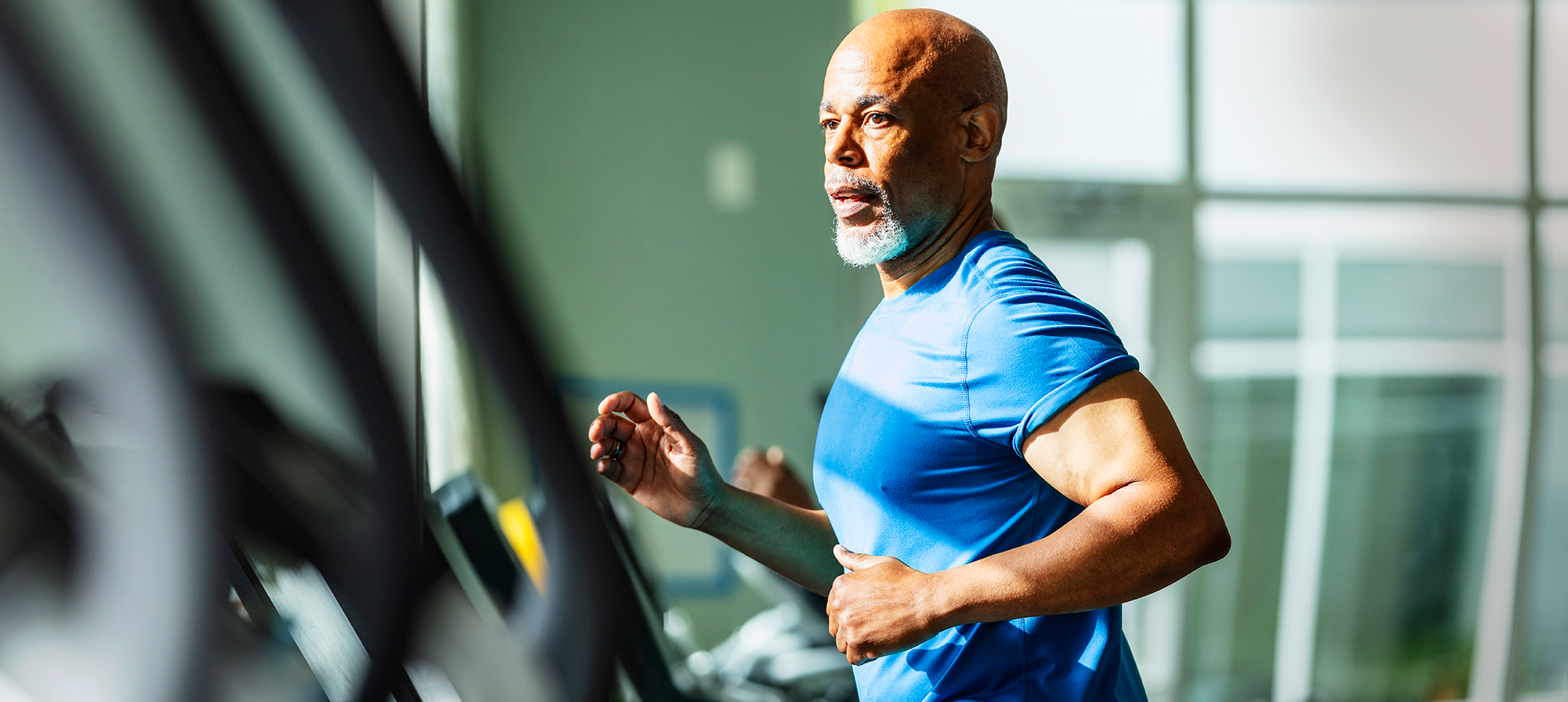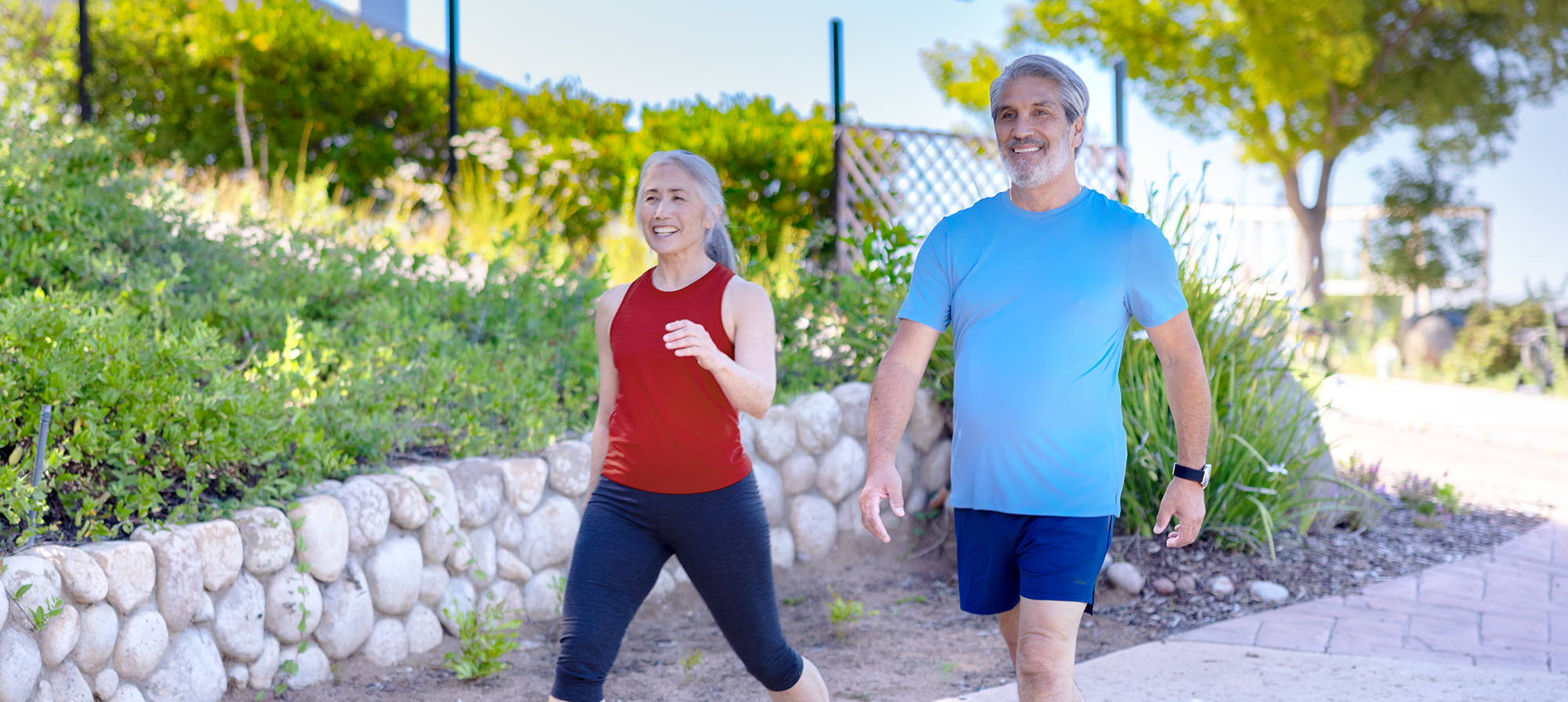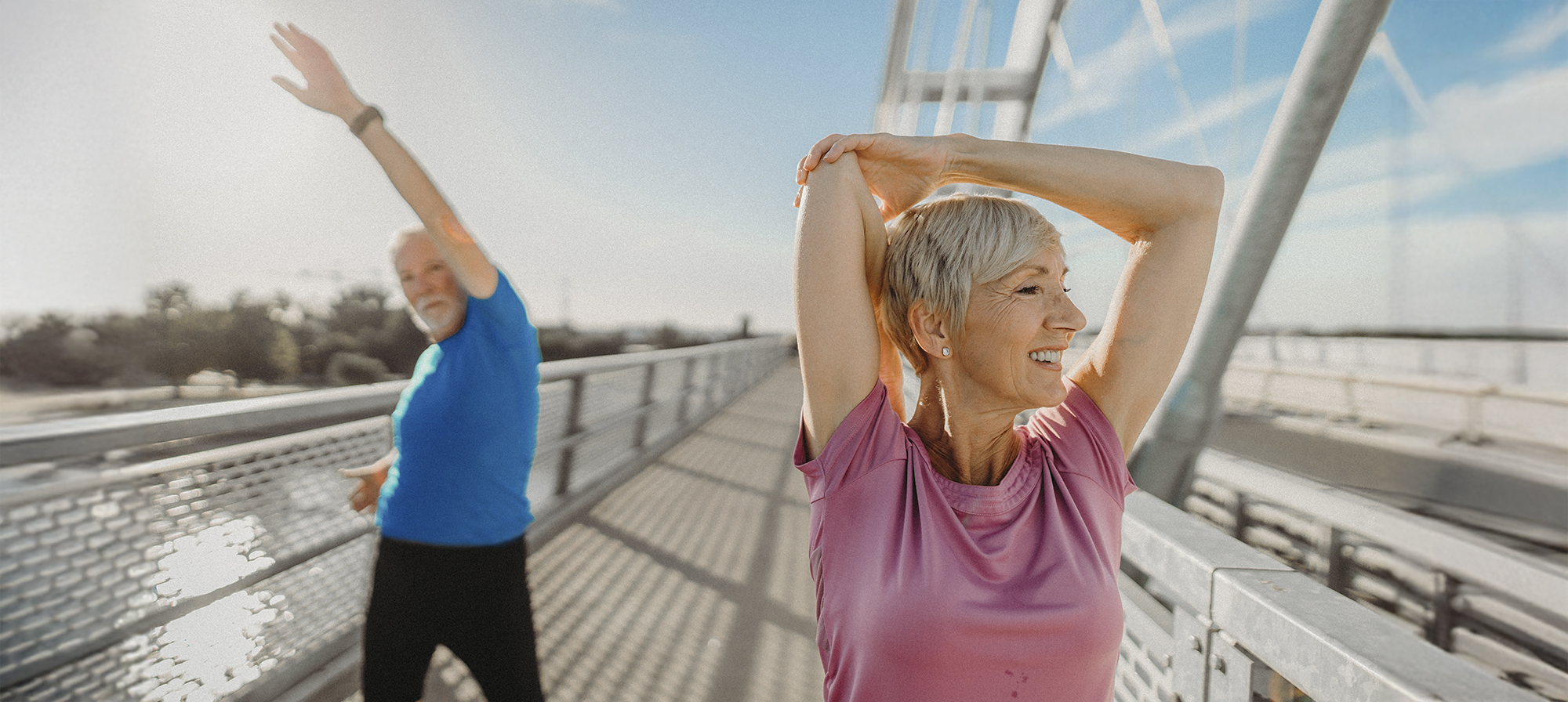You believe in the power of working up a healthy sweat. But what if your partner isn’t sold on the active lifestyle? Can you inspire them to get active?
There may be no sweeter way to show love than by motivating your partner to move more. The rewards of embracing an active life together go beyond those you’ll enjoy as individuals. You might find that your relationship itself gets better. In fact, research shows your sex life might get a boost. (More on that in a bit.)
If the task before you looms large, here’s some good news: As an active person, you’re already modeling the behavior you hope to inspire. A study published in JAMA Internal Medicine found that if you’re physically active, your partner is 5 times more likely to become active, too. But here’s the rub: It might take some strategy and commitment on your part to spark that transformation.
While the commitment is up to you, here are some tips that can help you form your strategy.
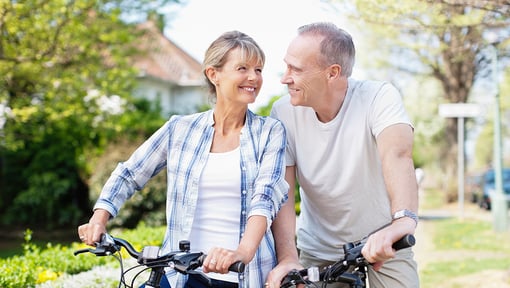 Personal health benefits of an active lifestyle
Personal health benefits of an active lifestyle
The perks of being fit are seemingly endless, as you may have found. Fitness looks good, feels great, and acts to help stave off a wide range of ills.
Staying active and fit can help minimize the aches of arthritis. It can lower your risk for, among other things, the top 2 deadliest diseases in the U.S.: heart disease and cancer. It is also a potent ally in preventing and managing mood disorders, like depression.
Of course, your partner has likely also heard about these rewards—as well as the risks of being inactive and unfit. Unfortunately, promises of future rewards, and threats of future consequences, are not always enough to get people to exercise. Sometimes, the perks have to be felt firsthand before the real motivation starts.
Relationship benefits of sharing an active lifestyle (hint: better sex)
It’s not a big surprise that couples who enjoy working up a good sweat also tend to have better sex lives. The science-based reasons might surprise you, though. Studies have found clear links between exercise and greater sexual health and function. The findings pertain to certain issues that affect many older adults. Among the perks that active romantic couples can enjoy:
Reduced erectile dysfunction (ED) in men. ED happens when men can’t get or keep an erection for sex.
ED can have many causes. But circulatory issues are often at the heart of it. Issues like high blood pressure, obesity, and blocked arteries may hinder the healthy blood flow needed for erections.
A 2018 study suggested that men with ED could boost their sexual function by exercising 160 minutes each week. However, men with ED should start by seeing their doctor to find out what might be causing their ED.
Increased desire in women. Low libido is common in post-menopausal women. But exercise has been shown to boost sexual arousal in women, both in the short term and long term. That can be a game changer for couples who deal with mismatched sex drives.
Exercise causes physical changes that can increase libido. Increased activity in the sympathetic nervous system may be a factor. So might changes in hormones. Scientists also believe that improvements in mood might play a role.
Learn why it’s possible to have a great sex life at any age.
Better sex is not the only relationship benefit. Many couples who get active together find they get along better outside the bedroom, too. Exercise is a terrific stress diffuser. And, as mentioned, it is a known mood lifter. The result can be a smoother relationship in all areas of your life together.
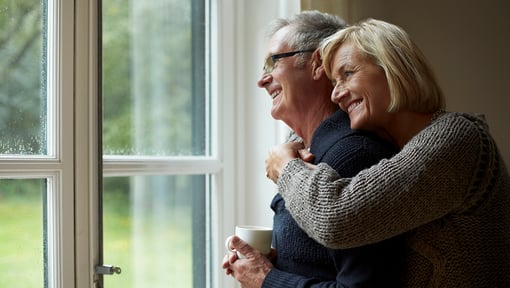
How to Motivate Your Partner to Get More Active
At this point, you’ve learned some of the “why” of motivating your partner. Now for the “how.”
Be open-minded about what “active” is. Being active is about so much more than hitting the gym or doing cardio. If you have a limited notion of what “counts,” now would be a great time to adjust your view.
Being active can simply mean having fun…without sitting. Think about inviting your partner to try pickleball, walk or bike around the neighborhood, play ping-pong, or just put on some funky music and dance—together.
Being active can also mean tackling a home project together. Repaint a bedroom, plant a tree or row of shrubs, or wash your car by hand together. Or just walk to the store for a few groceries.
The point is to get your partner moving in mostly enjoyable ways─ones that don’t necessarily seem like exercise. When you can, make it fun for them by appealing to what interests them.
One more tip: No matter what you invite your partner to try, be sure to leave the word “exercise” out of the conversation. “Let’s exercise!” rarely motivates anyone.
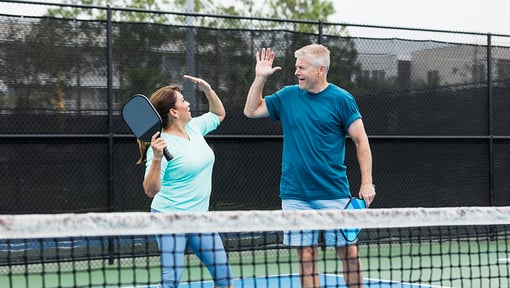
Be the influencer (not the influenced). Influence can go both ways. There’s a chance that, in time, your partner’s sedentary behaviors could lead you to fall away from your active habits. So, keep doing your part by being a good role model.
When it comes to motivating someone, leading by example will always beat out nagging, shaming, and lecturing. Also, be sure to check any self-righteousness or judgment at the door. Instead, let your vivacious, fit self shine through. Let the fun of fitness serve as an invitation to the active life.
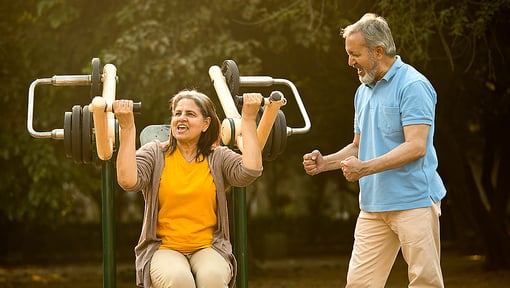
Widen the circle of influence. Not only can you influence your partner, but your active friends can, too. Dare to let worlds collide by sharing your fitnes-minded friends with your partner.
One study showed that people tend to change to fit in better with their social circle. Inactive people who start associating more with health-minded, active people are likelier to take on those behaviors.
So, expose your partner to the habits, mindset, and positive energy of the active set. You may never convince your partner to love that strenuous 6 a.m. hike as much as you and your active friends do. But that’s OK. If your habits make a neighborhood walk seem more accessible, they’ve had a positive influence. And that’s a great start.
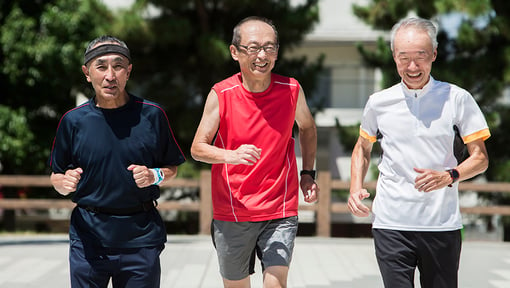
Do it together (at least some of the time). You don’t have to become the couple who jogs side-by-side in matching tracksuits to get the rewards of sharing an active lifestyle.
But working out together at least some of the time might have added benefits. Even if you never share workouts, you can share a love for the active lifestyle and achieve a fitter future together.
A 2021 study looked at couples who sometimes exercised together and other times worked out separately. On days when they worked out with their romantic partner, the couples cited more positive rewards, both during and after workouts.

You now have a few tactics to try in bridging your partner to a more active lifestyle. With a gently encouraging approach, you can give your partner a chance to have some fun, as well as chalk up a boost in energy and even mood. That has the power to plant the seeds of a new attitude toward exercise and other types of activity.
As your partner’s perception of being active grows more positive, they will find it easier to get moving. As a bonus, they will know every step of the way how much you care.
Learn 5 ways to get your exercise motivation back on the right track.
Not a Silver&Fit® member? Learn more about everything the program has to offer, including more helpful healthy living tips like this, here on our website.
This information is not intended to take the place of regular medical care or advice. Please check with your doctor before using this information or beginning any self-care program. Images used for this article do not depict any members of the Silver&Fit Program.
References
Dudenhoefer, N. (2018). How 10,000 steps a day can save your relationships—and how to get started today. Pegasus: The Magazine of the University of Central Florida. https://www.ucf.edu/pegasus/10000-steps-day-can-save-relationships/
Gerbild, H., Larsen, C. M., Graugaard, C., & Areskoug Josefsson, K. (2018). Physical activity to improve erectile function: A systematic review of intervention studies. Sexual medicine, 6(2), 75–89. https://doi.org/10.1016/j.esxm.2018.02.001
Mema, E., Spain, S., Martin, C. K., Hill, J. O., Sayer, R. D., McInvale, H. A., Evans, L. A., Gist, N. H., Borowsky, A., D., & Thomas, D. M. (2022). Social influences on physical activity for establishing criteria leading to exercise persistence. PLOS ONE, 17(10): e0274259. https://pubmed.ncbi.nlm.nih.gov/36260559/
Nazarpour, S., Simbar, M., Ramezani Tehrani, F., & Alavi Majd, H. (2016). Sexual function and exercise in postmenopausal women residing in Chalous and Nowshahr, Northern Iran. Iranian Red Crescent Medical Journal, 18(5), e30120. https://pubmed.ncbi.nlm.nih.gov/27437131/
Sackett-Fox, K., Gere, J., & Updegraff, J. A. (2021). Better together: The impact of exercising with a romantic partner [Abstract]. Journal of Social and Personal Relationships, 38(11), 3078–3096. https://doi.org/10.1177/0265407521101208
Wardle J, Steptoe A, & Jackson S. (2015). The influence of partner’s behavior on health behavior change: The English longitudinal study of ageing. JAMA Internal Medicine, 175(3), 385-392. https://jamanetwork.com/journals/jamainternalmedicine/fullarticle/2091401
This article was written by Candace Hodges, edited by Jason Nielsen, and clinically reviewed by Jaynie Bjornaraa, PhD, MPH, PT, LAT, ATC, CSCS, CSPS, on July 28, 2025.


